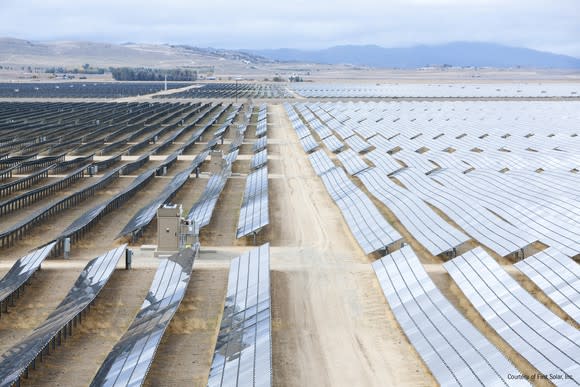Why Shares of First Solar, Inc. Popped 110.4% in 2017
What happened
Shares of thin-film solar manufacturer First Solar, Inc. (NASDAQ: FSLR) jumped 110.4% in 2017, according to data provided by S&P Global Market Intelligence, after the company wildly outperfored investor expectations and increased its manufacturing plans.
So what
A lot of the operational improvement happened midyear when First Solar announced it was able to sell projects it had developed for about $150 million more than it expected. Low interest rates and high demand for solar projects helped drive the increase in value.

Image source: First Solar.
Two other factors that drove the stock were the threat of solar tariffs from Suniva's Section 201 solar trade case and its plans to increase capacity. What helps First Solar is that its thin-film panels are excluded from the case, so it can import solar panels tariff-free, and it also has 600 MW of U.S. manufacturing capacity. Tariffs haven't been determined yet, but customers looking to guarantee they aren't going to be subject to panels with tariffs booked over 6.7 GW of sales during 2017, a windfall for First Solar.
The bookings gave First Solar enough confidence to increase capacity from 4.0 GW to 5.7 GW by the end of 2020. That will give it more opportunity for profitability, leveraging existing operational spending on research and development (R&D) and sales.
Now what
Almost everything that could have gone well for First Solar in 2017 did. Operations were strong, the threat of tariffs helped, and demand for future solar panels was strong enough to all but guarantee profitability for at least the next two years. Depending on how tariffs come out, First Solar's windfalls could be just beginning, so keep an eye on whether the Trump administration will give it more fuel in 2018.
More From The Motley Fool
Travis Hoium owns shares of First Solar. The Motley Fool recommends First Solar. The Motley Fool has a disclosure policy.

 Yahoo Finance
Yahoo Finance 